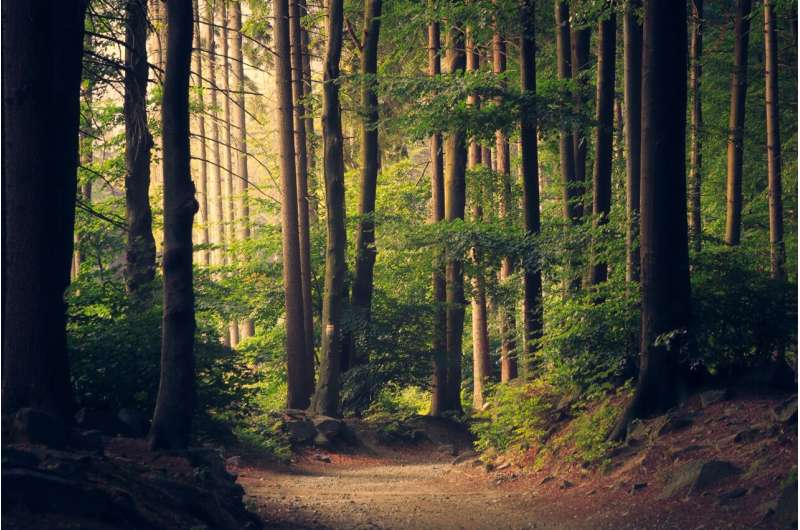This article has been reviewed according to Science X's editorial process and policies. Editors have highlighted the following attributes while ensuring the content's credibility:
fact-checked
peer-reviewed publication
reputable news agency
proofread
US forests are failing to keep up with climate change, finds study

When it comes to saving the planet from the ravages of climate change, protecting forests is a high priority for almost everyone.
At the current rate of warming, though, forests may not be able to adapt fast enough to stay healthy, according to a study out Monday in the journal Proceedings of the National Academy of Sciences. That has adverse implications for everything from carbon storage to biodiversity.
The study looked at forests in the Western U.S. and found that they are evolving to handle to warmer temperatures—something scientists call "thermophilization"—by becoming increasingly dominated by trees that are better able to tolerate the stress caused by heat and drought.
However, the researchers found that rate of this transformation is "lagging behind climate change by roughly tenfold." That's creating a situation where, the paper said, "forest trees are becoming increasingly mismatched with their environment." That means trees are more likely to die or be susceptible to fire or insect infestations.
Researchers from the University of California at Berkeley and the U.S. Forest Service analyzed the composition of roughly 50,000 forest plots in the Western states over 10-year periods. The USFS has undertaken multi-decade effort to build an inventory of trees on these plots to monitor long-term changes, and the researchers used this data and then mapped localized climate change data on top of it.
"Ideally, you'd see a one-to-one relationship between tree heat tolerance and warming," said Kyle Rosenblad, a Ph.D. candidate at the university and the lead author.
While he and the team found that trees with a greater tolerance for higher temperatures and dryer weather like the California juniper are indeed gaining in dominance, the climate change is outpacing those adaptations.
As worrisome, said Rosenblad, is how the ratio of trees is shifting. New species are not coming into the forests. Instead the change in composition is happening mostly because established species that prefer colder and wetter conditions—Douglas fir, for example—are dying and or are being weakened and attacked by insects.
That could lead to vast ecological change over centuries or perhaps even decades. "Places that are forested today may only be able to support grassland," Rosenblad said. "Try as we might, we may not be able to stop that."
The U.S. has more than 32 million acres of old-growth forests on public lands, according to a survey released earlier this month. Those mature trees are particularly valuable because of their ability to store a large amount of carbon. U.S. President Joe Biden's administration is expected to use information from that census as the basis for a new forestry policy that protects more old growth timber from logging.
However, as the study shows, stopping logging alone may not be nearly enough. In recent years rampant wildfires and beetle infestations have decimated millions of acres of trees, and driven in part by rising temperatures.
"Even if they remain forests, the type of forest will be very different," he added, "So for the people and animals who depend on these forests, this is going to be a drastic change and we need to start thinking about how we will adapt."
More information: Kyle C. Rosenblad et al, Climate change, tree demography, and thermophilization in western US forests, Proceedings of the National Academy of Sciences (2023). DOI: 10.1073/pnas.2301754120
Journal information: Proceedings of the National Academy of Sciences
2023 Bloomberg News.
Distributed by Tribune Content Agency, LLC.




















